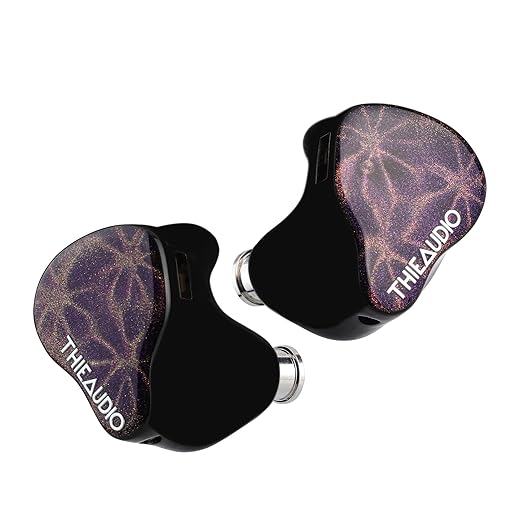Introduction: Soundstage Isn’t Just Space—It’s Intent
In the world of personal audio, “soundstage” is often misunderstood. It’s not just about width or depth—it’s about placement, breath, and the illusion of presence. It’s the difference between hearing a violin and sensing where it was played. And while speakers rely on room acoustics to conjure this illusion, in-ear monitors (IEMs) must build it from within.
Multi-driver IEMs—those with hybrid, tribrid, or balanced armature arrays—are often celebrated for their ability to separate instruments and extend frequency response. But do more drivers always mean more space? Not quite.
The Promise and Pitfall of Multi-Driver Designs
Multiple drivers allow designers to assign sonic roles: bass to dynamic drivers, mids to balanced armatures, treble to electrostatics. This division can create clarity and layering—essential ingredients for soundstage. But without careful tuning, phase alignment, and acoustic design, the result can feel disjointed or artificial.
It’s important to distinguish between instrument separation and soundstage—terms often used interchangeably but rooted in different experiences. Instrument separation refers to how clearly an IEM can delineate individual sounds within a mix: the pluck of a guitar, the breath behind a vocal, the shimmer of cymbals. It’s a measure of clarity and resolution. Soundstage, on the other hand, is about placement and dimensionality—not just hearing the instruments, but sensing where they are. A multi-driver IEM may excel at separation by assigning frequencies to specialized drivers, but without coherent tuning and phase alignment, it can fail to create a believable stage. The result is a mix that feels parsed but not placed—like hearing each musician clearly, but not knowing where they’re standing. True soundstage requires both separation and spatial intent.
Purpose-Built for Music: Where Soundstage Comes Alive
In our Connoisseur’s Guide to Wired IEMs ($50–$800), we highlighted several models that don’t just separate instruments—they host them. These IEMs are purpose-built for music listening, with internals that honor the recording’s spatial fingerprint.
🎧 Purpose-Built IEMs That Host the Soundstage
| Model | Driver Configuration | Soundstage Strengths |
|---|---|---|
| THIEAUDIO Hype 2 | 2DD + 2BA hybrid | Expansive imaging, rich layering |
| Moondrop Variations | 1DD + 2BA + 2EST tribrid | Superb tonality, holographic depth |
| Moondrop KATO | Single DD (ULT) | Natural vocals, immersive placement |
| Letshuoer S12 Pro | Planar magnetic | Fast transients, wide separation |
These aren’t just technical achievements—they’re editorial choices. The Hype 2 stages like a velvet parlor, warm and immersive. The Variations feel like a minimalist loft, airy and precise. Even the KATO, with a single driver, proves that coherence can rival complexity.
🎭 Parsed vs. Placed: A Visual Metaphor
Imagine two performances:
- In the first, each musician is isolated under a spotlight. You hear every note clearly, but the ensemble feels disjointed—like soloists sharing a stage but not a moment.
- In the second, the musicians breathe together. You sense the cello behind the piano, the vocalist between the horns. The space feels authored, not just audible.
This is the difference between instrument separation and soundstage.
| Concept | What It Describes | Common Strengths | Common Pitfalls |
|---|---|---|---|
| Instrument Separation | Clarity between individual sounds | Detail retrieval, layering | Can feel clinical or disconnected |
| Soundstage | Spatial placement and dimensionality | Immersion, realism, emotional depth | Can be smeared if phase is misaligned |
Multi-driver IEMs often excel at separation by assigning frequencies to specialized drivers. But without coherent tuning and phase integrity, they may fail to place those sounds convincingly. The result? A parsed mix, not a placed one.
🏛️ The IEM as a Room with Memory
Imagine an IEM not as a device, but as a room. Not a concert hall, but a memory of one. The walls aren’t physical—they’re shaped by tuning curves, driver placement, and acoustic damping. The ceiling is the treble extension. The floor is the bass foundation. The furniture? Vocals, strings, percussion—each placed with intention.
In this room:
- The Moondrop Variations feels like a minimalist loft—clean lines, airy treble, precise imaging.
- The THIEAUDIO Hype 2 is a velvet parlor—warm lighting, rich textures, immersive depth.
- The KATO is a study—balanced, intimate, with natural light falling on vocals.
The best IEMs don’t just reproduce sound. They recreate the room it was born in—and sometimes, the room you remember it in.
Conclusion: The Stage Is Not a Spec Sheet
Multi-driver IEMs offer the potential for space—but only when designed with intention. The best models don’t just parse frequencies—they host moments. They recreate not just sound, but the room it was born in. And for listeners who seek emotional clarity and spatial realism, these purpose-built IEMs offer a threshold into deeper listening.





